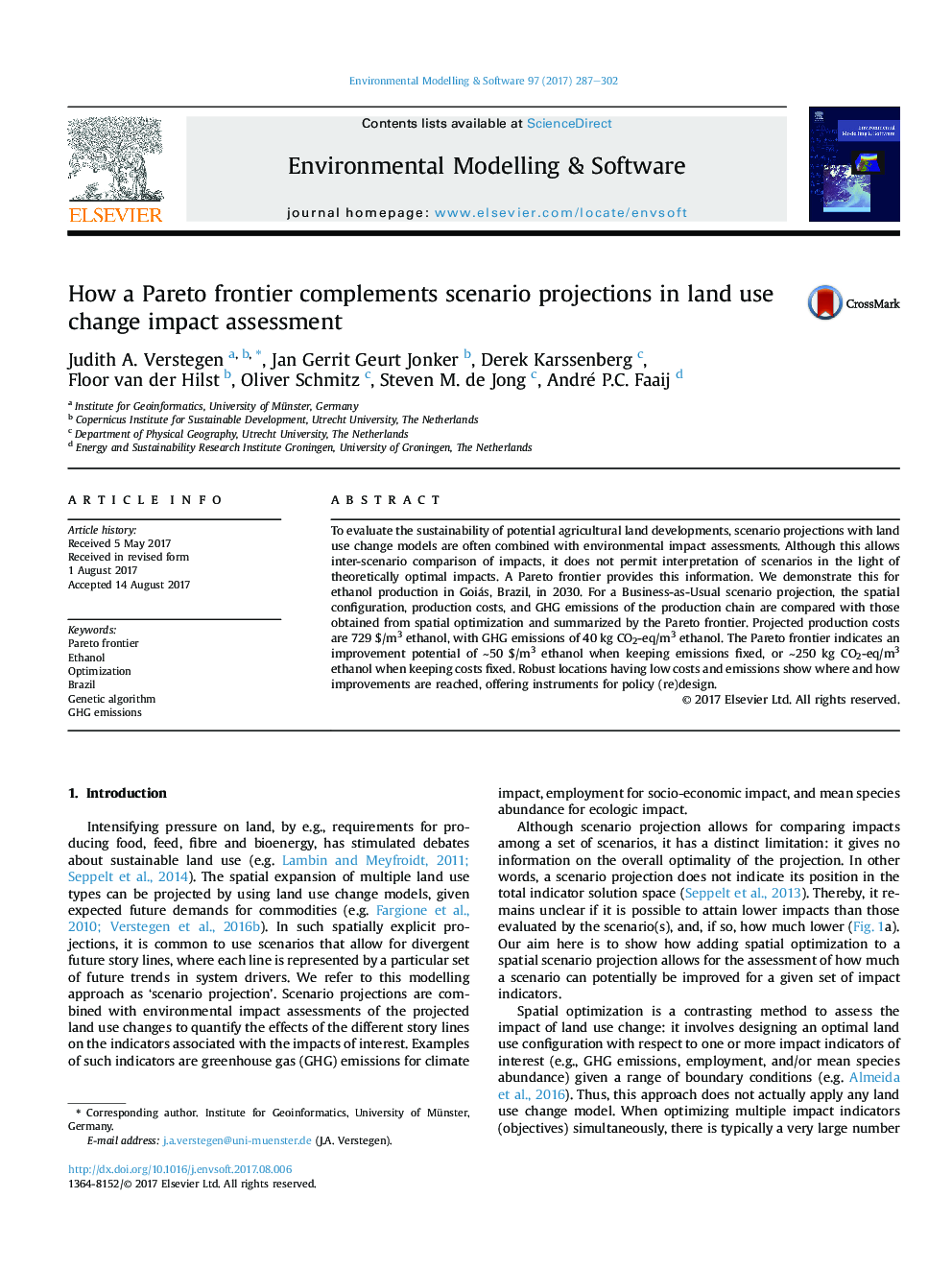| کد مقاله | کد نشریه | سال انتشار | مقاله انگلیسی | نسخه تمام متن |
|---|---|---|---|---|
| 4978067 | 1452253 | 2017 | 16 صفحه PDF | دانلود رایگان |
عنوان انگلیسی مقاله ISI
How a Pareto frontier complements scenario projections in land use change impact assessment
ترجمه فارسی عنوان
چگونه مرز پارتو را تکمیل پیش بینی سناریو در ارزیابی تاثیر تغییر در استفاده از زمین
دانلود مقاله + سفارش ترجمه
دانلود مقاله ISI انگلیسی
رایگان برای ایرانیان
کلمات کلیدی
مرز پارتو، اتانول، بهینه سازی، برزیل، الگوریتم ژنتیک، انتشار گازهای گلخانه ای،
موضوعات مرتبط
مهندسی و علوم پایه
مهندسی کامپیوتر
نرم افزار
چکیده انگلیسی
To evaluate the sustainability of potential agricultural land developments, scenario projections with land use change models are often combined with environmental impact assessments. Although this allows inter-scenario comparison of impacts, it does not permit interpretation of scenarios in the light of theoretically optimal impacts. A Pareto frontier provides this information. We demonstrate this for ethanol production in Goiás, Brazil, in 2030. For a Business-as-Usual scenario projection, the spatial configuration, production costs, and GHG emissions of the production chain are compared with those obtained from spatial optimization and summarized by the Pareto frontier. Projected production costs are 729 $/m3 ethanol, with GHG emissions of 40Â kg CO2-eq/m3 ethanol. The Pareto frontier indicates an improvement potential of â¼50 $/m3 ethanol when keeping emissions fixed, or â¼250Â kg CO2-eq/m3 ethanol when keeping costs fixed. Robust locations having low costs and emissions show where and how improvements are reached, offering instruments for policy (re)design.
ناشر
Database: Elsevier - ScienceDirect (ساینس دایرکت)
Journal: Environmental Modelling & Software - Volume 97, November 2017, Pages 287-302
Journal: Environmental Modelling & Software - Volume 97, November 2017, Pages 287-302
نویسندگان
Judith A. Verstegen, Jan Gerrit Geurt Jonker, Derek Karssenberg, Floor van der Hilst, Oliver Schmitz, Steven M. de Jong, André P.C. Faaij,
